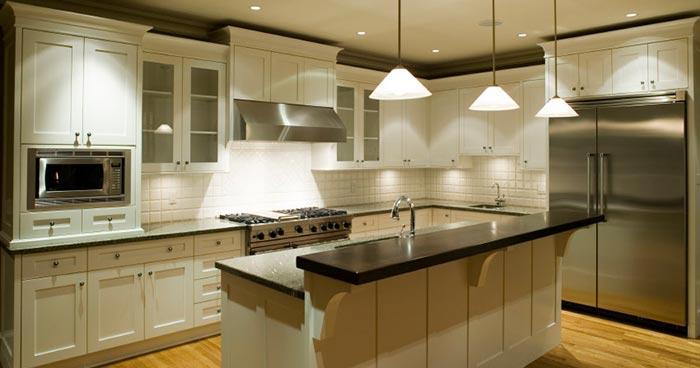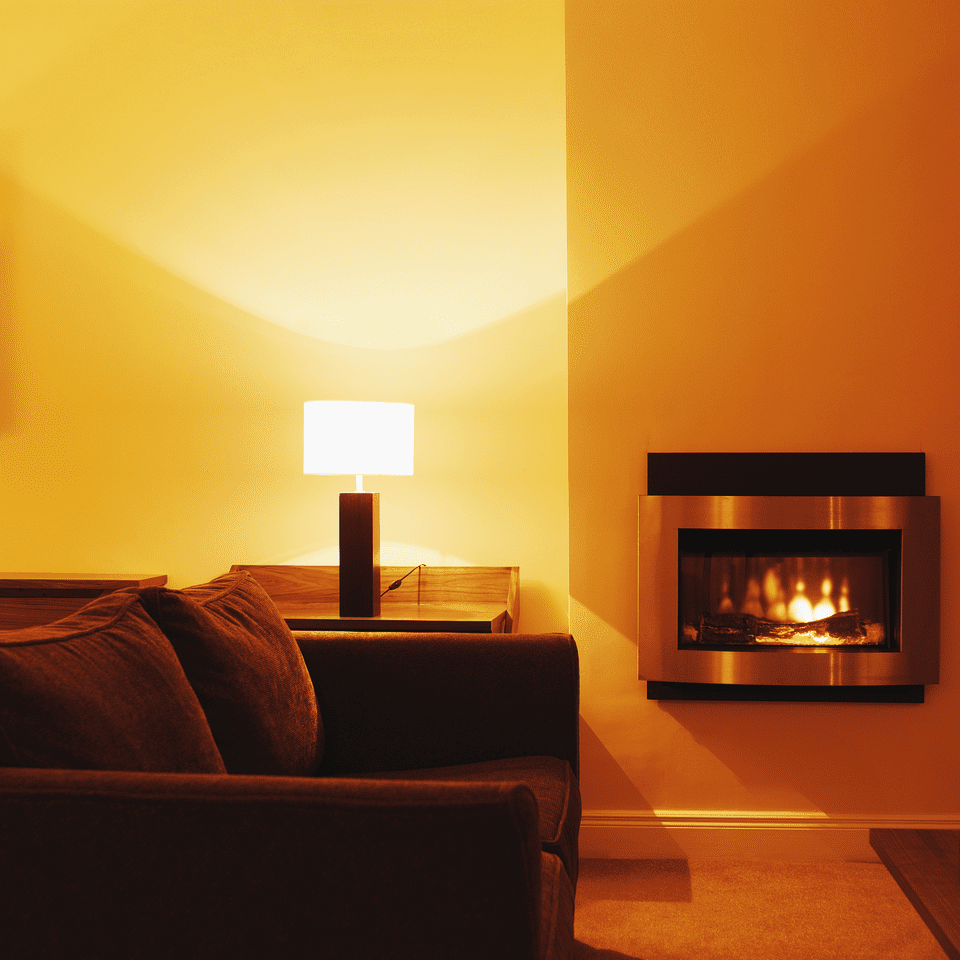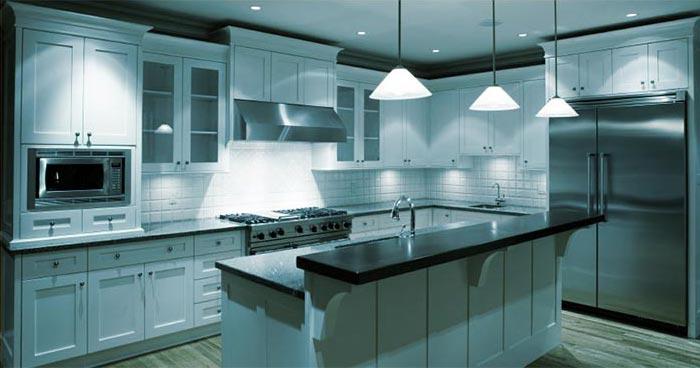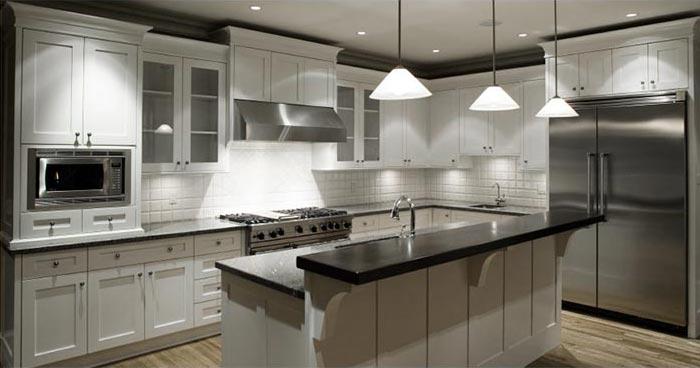



Whether you are setting the mood in a living room or hotel guest room or looking for task lighting in the office& kitchen, knowledge of colour temperatures is very crucial.
What kind colour do you choose for a restaurant or a guest room in a hotel? What colour would you choose for your living room, bedroom or dining room? What about the bathroom and kitchen?
In commercial applications choosing the right colour temperature is important and will depend on the mood you want to create and the products you are promoting.
Warm lighting feels more natural for us in the evenings. As part of our natural human circadium rhythm, warm light seems to relax us and help us wind down for the say, get ready for sleep. Warmer light promotes relaxation.
Cool lighting (White) helps us be alert and energetic for performing tasks, cool lighting in our evening spaces may however interfere with our inner clock. Reddish light is warmer and bluish light is cooler.
Cool white light contains more blue light and looks brighter to the eye (this is why cool white bulbs have a higher lumen output when compared to the equivalent warm white bulb).
Correlated Colour temperature (CCT)
Correlated Colour temperature (CCT) in lighting describes how the colour of the light appears from a lamp, measured in kelvins (K).
The color of light is expressed in color temperature, which relates to the temperature of a hypothetical black body would radiate at various temperatures – and, perhaps confusingly, warmer colors are at lower color temperatures than cooler colors are. I.E colour temperature does not describe the actual temperature of the lamp itself but the colour it produces and counter-intuitively; the higher the colour temperature the “cooler” a lamp will look.
Imagine a scale from 1000K (very red) to 10,000K (very blue) (actual scale is wider). The higher up the scale you go, the closer the light resembles blue daylight.
| Kelvins | Type | |
| 1,000K | Candlelight Red/Yellow | |
| 1800K | Vintage-look Filament Lamp – Orange | Ultra Warm |
| 2400K | Lamp style used in hospitality | Very Warm |
| 2700K | Conventional Halogen and LED Lamp – Yellow | Warm |
| 3000K | Warm White | |
| 4000K | CFL and LED – White | Cool White |
| 5000K | Daylight | |
| 6000K – 7000K | Cool Daylight | |
| 10,000K | Blue Sky – Blue |
Put simply, colour temperature is based on how the colour of heated metal changes as its temperature is increased – turning from red to yellow then blue. You can then determine the temperature of a heated metal by its colour. This range of colours at different temperatures has become useful for describing the colour tint of white light. The colour of light from an LED lamp is approximated or “correlated” to this scale.
Colors on the color temperature scale from about 2700-3000K are called warm colors. These are the reddish or yellowish whites, and are typical of incandescent lamps.
Incandescent bulbs emit light based on thermal radiation – the heat of the filament – so the color temperature is closely related to the actual temperature of the filament of the bulb.
Soft white compact fluorescent bulbs produce light at a color temperature of about 3000K.
Sunset and sunrise typically feature light in the warm color temperature range, a bit lower in number (about 1800K) than the light of a warm incandescent bulb. Moonlight is a bit bluer or cooler, in the 4100K range.
Candle and match flames are typically in the range of 1700-1900K.
Perhaps warmer colors resonate with us for evening because of the color of the evening hearthside fire. Warm light in the early morning, as might come in through an east-facing window, can also be comforting and help ease us into wakefulness
Where Should I Use Warm Light?
Consider not just the choice between warm or cool light, but where and when to use each. You will likely want some mixture of cool and warm light in a space, and it’s especially helpful to have separate controls for “scenes” that require different ambiance.
Warm, or soft white, light, is especially appropriate for cozy living spaces where we want to relax and be comfortable. Use it to simulate evening or very early morning light. Use cooler lighting for tasks that require a lot of focus. Warm lights look better in many period rooms, and especially those with warm colors in them.
Where can I use them?
Below are some common areas where the different colours can be used:
- Warm to Warm white – living room, bedroom, hallway
- White to Cool white – kitchen, study, bathroom, cupboard, office, retail
- Daylight – Commercial, retail, art studios
Conclusion-Warm or cool?
There are no rules – the choice is about personal preference and use. If you like the traditional yellowish colour of a conventional lamp then warm white around (2700-3000K) would be the ideal choice, this is the most popular choice for homes. If you want a modern, clean look, you may prefer the cleaner, brighter feel of a cool white lamp (4000K+). Cool white light contains more blue light and looks brighter to the eye (this is why cool white bulbs have a higher lumen output when compared to the equivalent warm white bulb).
How do I know which one I am buying?
All Integral retail packs have a clear icon and colour temperature indicated on the packaging. In addition, each lamp will have the colour temperature printed on the base e.g. “3000K”.
Due to variations in the manufacturing process and different measurement methods you should consider buying the same model of LED lamp for all the fittings in an area or room.
